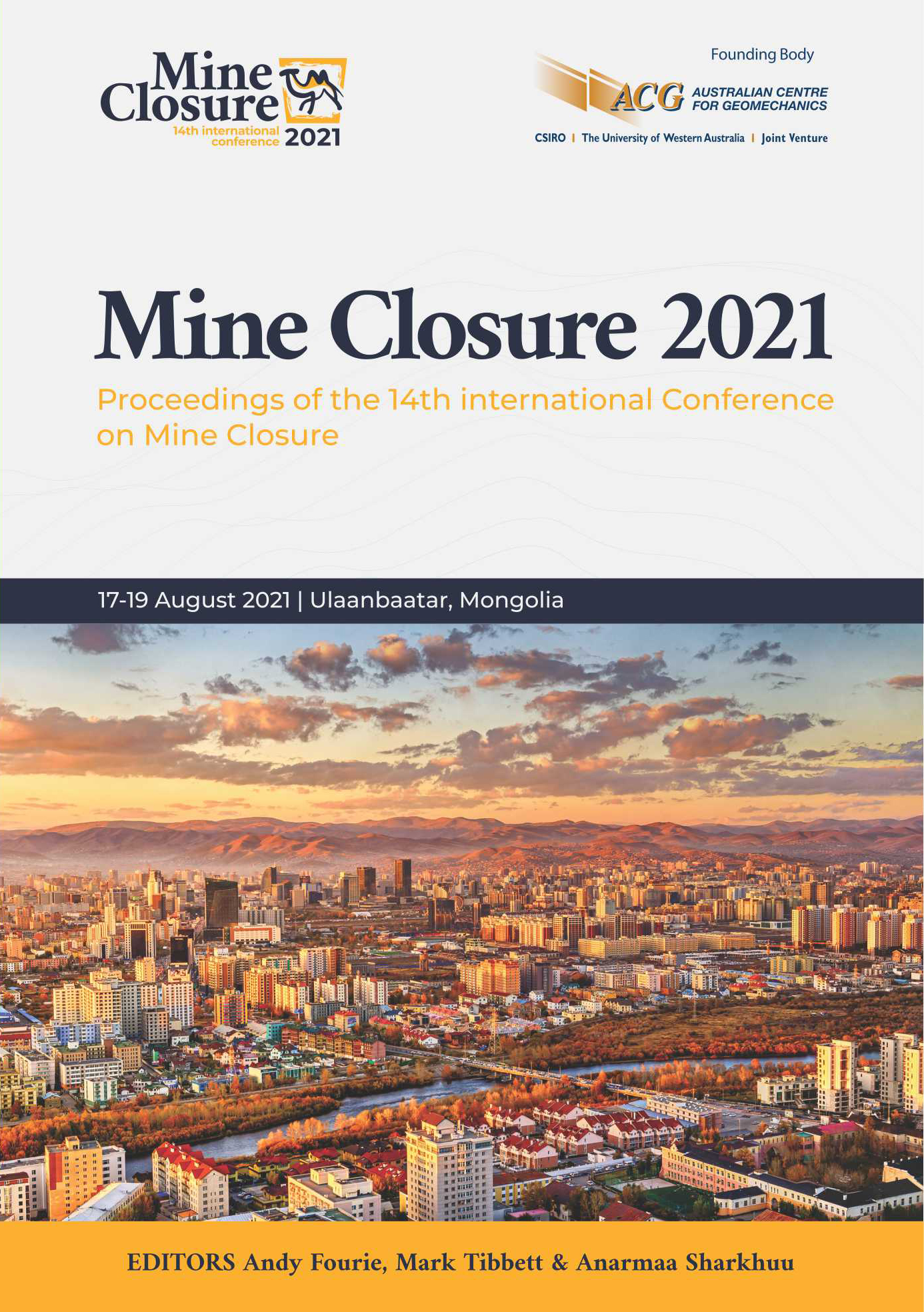The future of Good Samaritan legislation related to the legacy of hardrock mining in the United States and the challenges it poses for our social license to operate

|
Authors: Collyard, JS; Patterson, T |
DOI https://doi.org/10.36487/ACG_repo/2152_05
Cite As:
Collyard, JS & Patterson, T 2021, 'The future of Good Samaritan legislation related to the legacy of hardrock mining in the United States and the challenges it poses for our social license to operate', in AB Fourie, M Tibbett & A Sharkuu (eds), Mine Closure 2021: Proceedings of the 14th International Conference on Mine Closure, QMC Group, Ulaanbaatar, https://doi.org/10.36487/ACG_repo/2152_05
Abstract:
The social licence to operate is one of, if not the greatest challenge and risk faced when expanding or opening a new mine. Why is that? The negative public legacy of mining in the United States, and globally for that matter, is one of human health impact and environmental destruction. This legacy is the result of short-term vision, a lack of concern for impacts to the natural environment and human health, and a lack of adequate regulatory guidance and enforcement. Fortunately, the mining industry is committing to long-term planning and operation practices for preserving and protecting environmental and human health, and committing to good land and water stewardship through investing in an ever-evolving set of technical capabilities to execute these reformed mining legacy outcomes. Good Samaritan legislation in the United States, and perhaps globally, may present the industries greatest opportunity to change the legacy of mining, its public image, and ultimately improve the mining industry’s ability to obtain social licence to operate. However, this enabling legislation, as it applies to abandoned mine land legacy issues, does not exist for federal and state environmental protection programmes and the political attempts over the past two decades to establish it have not been successful. This paper and presentation describe the status of abandoned mine land risks and concerns, the current regulatory agencies and structure, and processes applicable to mining and mine reclamation. The history, current state, and potential future benefits of Good Samaritan abandoned mine reclamation legislation / regulations at the federal and state level in the United States is the focus of this paper and presentation. Good Samaritan legislation presents opportunities and risks for the mining community and a pathway to better allocate private and public funds to improve the negative legacy of the mining industry and earn social licences to continue to operate mines in the United States. Stakeholders involved directly or indirectly in the mining community have the opportunity now to shape legislation and the abandoned mine land reclamation approach to achieve their goals. We as miners have the opportunity to shape our legacy, to make positive changes to the environment, to benefit stakeholders, and to reduce the risk and challenge of obtaining social licence to operate and as a result continue to provide the world with resources through adequate Good Samaritan legislation.
References:
Drover, C, Leonard, N 1980, ‘Prehistoric Turquoise Mining in the Halloran Springs District, San Bernardino County, California’, Journal of California and Great Basin Anthropology, vol. 2, pp. 245-256.
Mitchell, P, Stall, R, & Van Dinter A 2020, Top 10 Business Risk and Opportunities – 2021, EY, viewed 13 February 2021,
Office of Surface Mining Reclamation and Enforcement U.S. Department of the Interior, eAmlis Map, OSMRE, viewed 02 February 2021,
Pennsylvania Department of Environmental Protection, Environmental Good Samaritan Act, DEP PA, viewed 14 December 2020,
U.S. Department of the Interior, Natural Resources Revenue Data, Abandoned Mine Land Reclamation Program, viewed 02 February 2021,
© Copyright 2025, Australian Centre for Geomechanics (ACG), The University of Western Australia. All rights reserved.
View copyright/legal information
Please direct any queries or error reports to repository-acg@uwa.edu.au
View copyright/legal information
Please direct any queries or error reports to repository-acg@uwa.edu.au
